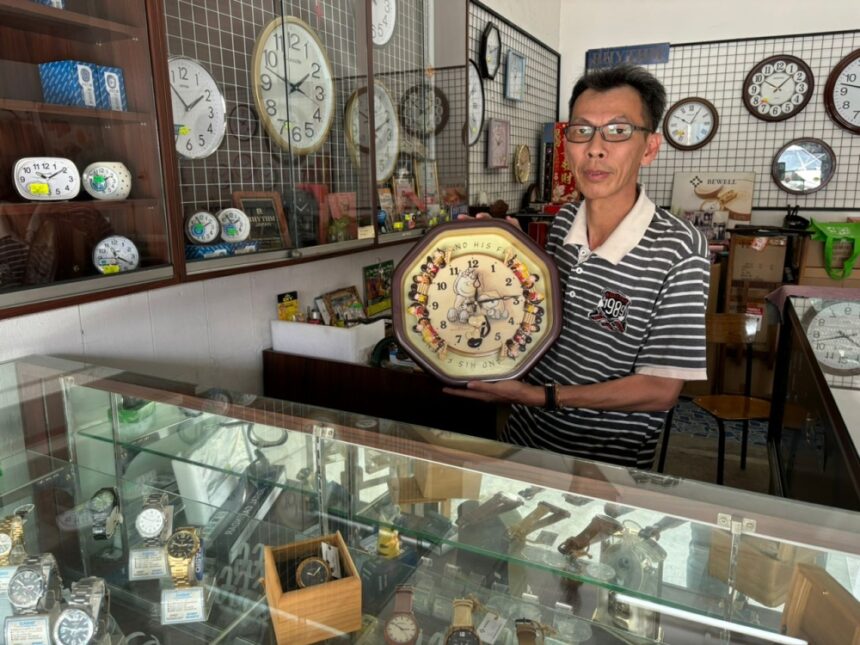IPOH, June 15 — In a quiet corner of Ipoh’s old town, 57-year-old Kwan Siew Mung spends his days repairing old watches and clocks from behind a modest glass counter.
As one of the few remaining traditional watch repairmen in the city, Kwan is preserving a craft that is slowly slipping into obscurity.
“There used to be more than ten watch repair shops here,” he told Malay Mail.
“Now, from old town to new town, you might find five or six only. And all of us are old. When we close shop, there won’t be anyone left.”
Kwan first learned the intricacies of watch repair as a teenager, under the tutelage of his father, who ran a small stall along Jalan Market. After completing his Sijil Pelajaran Malaysia (SPM), Kwan fully committed to the trade.
Kwan Siew Mung, 57, showing a picture of his father’s old watch stall also located at Jalan Market in Ipoh.Today, he operates from a small shop he moved into seven years ago, following increased tourism that made it unfeasible to continue working from his father’s corridor stall.
“This job isn’t about being difficult or easy; it’s about interest,” he said.
“Without passion, you can’t even fix a single screw properly in the watch, no matter how long you try.”
Over the past 30 years, Kwan has repaired everything from solar-powered timepieces to 50-year-old mechanical watches.
“Mechanical and automatic watches are different because they don’t use batteries. They require winding or movement to work. Their build is complex and unique,” he explained.
A typical watch service takes about 40 minutes to an hour, but vintage timepieces often require weeks or even months, especially if rare parts are needed.
“If you can’t find spare parts like a tiny spring, the whole repair is stuck. Every component matters, especially for old and rare pieces,” he said.
Kwan has serviced prestigious brands such as Seiko, Omega, and Rolex, with the most expensive piece valued at RM30,000, even as a second-hand item.
While his trade no longer attracts the crowds it once did, Kwan’s business survives on repairs, especially for timepieces with sentimental value.
“People don’t buy watches from us anymore. They go to shopping malls or shop online. But some still come to repair watches that mean something to them,” he said.
However, he notes a generational shift. “Young people prefer smartwatches, which are cheaper and easier to replace. These can’t be repaired the same way and don’t carry the same sense of status or story.”
Despite rising costs — RM2,000 a month for his current shop compared to RM300 during his stall days — Kwan remains steadfast in his commitment. Yet, the future of his craft seems uncertain.
“My children aren’t interested in continuing this business. You can’t get rich from it; you can only survive. In 10 years, I don’t think there’ll be many old watch repair shops left,” he said.
For now, Kwan stands as a guardian of a meticulous and vanishing tradition — keeping time alive, one delicate repair at a time.
Source: 
Ipoh’s last watch repairmen fight to keep a fading craft ticking


































